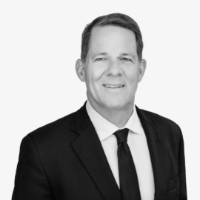SECURE Act 2.0: Will Real Retirement Plan Reform Happen in 2022?
David Schmid, Vice President - 401(k) Plan Advisor
With Social Security providing less and less of a benefit for each following generation, the government has realized that they must improve retirement plans to bolster savings. Therefore, many of the retirement plan changes are geared towards encouraging savings and expanding access. Other changes improve on current law and focus on making plans more efficient.
If any of the current versions of the Secure Act 2.0 become law, here is a
Quick Rundown of the Potential Changes with a Focus on 401(K) Plans:
As CNBC stated last week: “It’s uncertain whether either of two Senate proposals will make it into a final version of the so-called SECURE Act 2.0.”
Automatic Features:
Automatic escalation increases the employee’s contribution by a set amount annually. The passing of the Secure Act 2.0 would require a mandatory increase of 1% up to a level of 10% for non-safe harbor plans and 15% for safe harbor plans. Participants may opt out of the increase.
Tax Credits for Employers Starting New Defined Contribution Plans:
Other Secure Act 2.0 Savings Provisions:
- Allow for a new automatic enrollment safe-harbor plan with higher contribution percentages that avoids some non-discrimination testing rules.
- Allow for matching contributions based on student loan repayments. For example, if an employee puts $100 towards their student loan, the company will match it with a $100 employer contribution to the retirement plan.
- Allow for employers to set aside small amounts of money in an emergency savings account for employees.
- One proposal allows companies to auto enroll participants in emergency savings accounts at 3% of pay. Employees could access these accounts at least once a month. Participants could save up to $2,500.
- Another proposal would let workers withdraw $1,000 for their 401(k) without the current 10% early withdrawal tax penalty
- Permit older participants above the age of 62-64 to have increased catch-up contributions ($10,000 vs. the current $6,500).
- In 2023, the Secure act 2.0 would require all catch up contributions to be in Roth accounts.
- Permit other contributions to be Roth contributions, including employer matches and employer non-elective contributions.
- Increases required minimum distribution age to 73 beginning in 2023, 74 beginning in 2030, and 75 beginning in 2033.
- Revised definition of long-term and part-time employees
- Currently, long-term is defined as participants with five hundred hours each of the last three years. The new proposal changes that to two years.
- Currently, long-term is defined as participants with five hundred hours each of the last three years. The new proposal changes that to two years.
Few Highlights for Small Businesses to Think About:
Tax Credits for New Plans
Automatic Features for New Plans
According to Vanguard’s “How America Saves 2022: Insights to Action” Study: “Plans that used automatic enrollment had a 93% participation rate in 2021, compared with 66% for plans with voluntary enrollment.”In addition, “Vanguard analysis suggests automatic enrollment's default effect is strongest in influencing participation rates, with 9 in 10 automatically enrolled new hires remaining in their employer's plan after three years.”
Assuming that mandatory automatic enrollment and escalation are enacted, it becomes more likely a future bill (Secure Act 3.0?) makes auto-enrollment/escalation mandatory for all plans and not just new plans. This would increase costs at all businesses as everyone would be enrolled (record-keeping providers often charge a per employee fee) and total matching costs would increase for those companies that provide a match.
Although costs are always considered in bringing on a new plan or evaluating an existing plan, auto features have been proven to increase participation, increase deferral rates, increase the use of professionally managed accounts (target dates, risk models, managed accounts, etc.) and, therefore, have improved participant outcomes.
Unfortunately, according to a 2022 AARP Public Policy Institute study, 57 million American workers still do not have access to a company sponsored retirement plan and many just cannot afford to put enough away.
Vice President
DISCLAIMER: This newsletter is intended to provide thought-provoking commentary. The information presented herein has been obtained from and is based upon sources and vendors deemed to be reliable, but may be incomplete. Parkside Financial Bank


 David Schmid
David Schmid